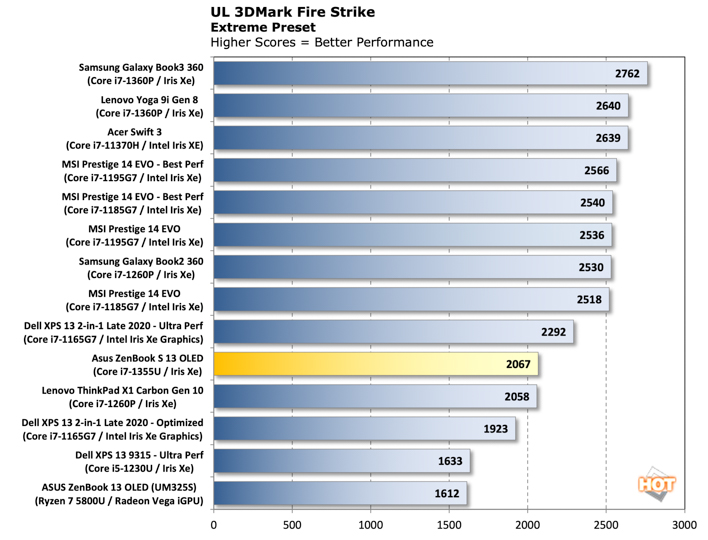ASUS ZenBook S 13 OLED Laptop Review: A Svelte Beauty
ASUS Zenbook S 13 OLED: Storage, CPU, Full-System Performance And Graphics
ATTO Disk Benchmark
ATTO disk benchmark is a fairly quick and dirty test that measures sequential read/write bandwidth across a range of different data sizes. While we don't typically compare these results across multiple machines, it's useful to gauge whether a particular notebook's storage subsystem is up to snuff for the use case scenarios that the machine will be tasked with.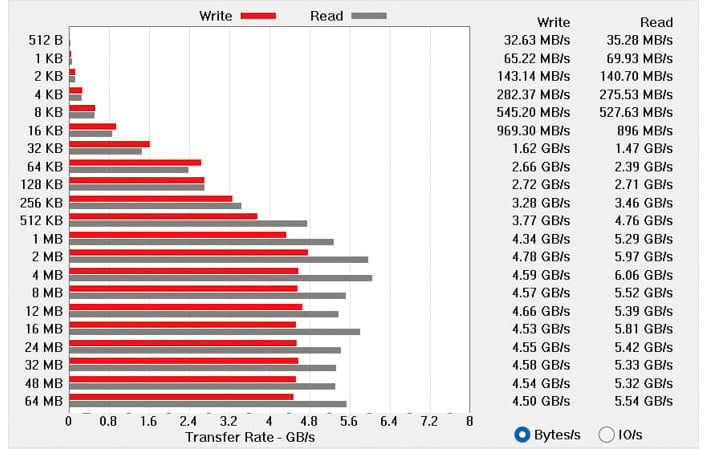
With its PCIe Gen 4 NVMe SSD, the ZenBook S 13 OLED was able to deliver quite respectable write speeds, hitting around 4.5GB/s at its peak. These scores beat many of the other laptops in this price segment, and more or less match the likes of the Lenovo Yoga 9i Gen 8. For the most part, speeds were uniform across the largest block sizes, so you'll get a fairly consistent experience if you often work with larger files, while small random transfers should be responsive too.
Speedometer 2.0 Browser Benchmark
We use BrowserBench.org's Speedometer test to gauge mixed internet usage experience, which takes a holistic look at web application performance. This test automatically loads and runs several sample web apps from ToDoMVC.com using the most popular web development frameworks around, including React, Angular, Ember.js, and vanilla JavaScript. This test is a better example of how systems cope with real web applications, as opposed to a pure JavaScript compute test like JetStream.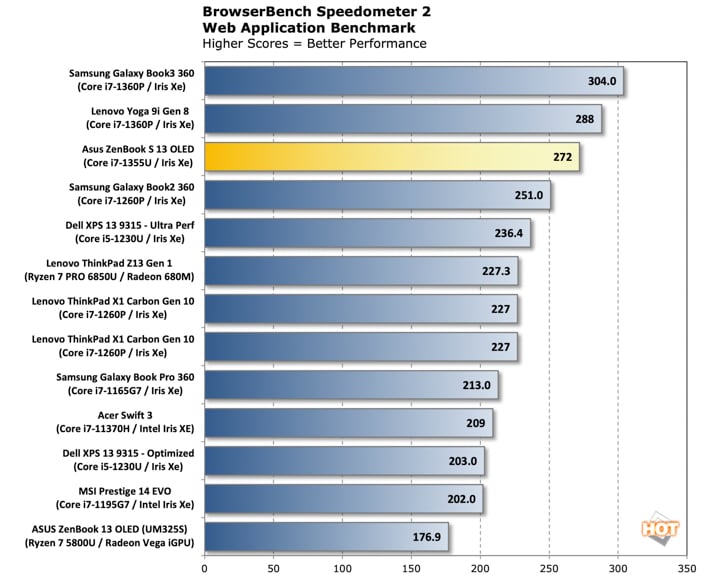
Cinebench R23 Rendering Benchmark
This is the latest 3D rendering benchmark from Maxon, based on the Cinema 4D R23 rendering engine. We tested both single-threaded and multi-threaded tests on all of the notebooks represented here...
Geekbench 5 Benchmarks
Geekbench is a cross-platform benchmark that simulates real world processing workloads in image processing and particle physics scenarios. We tested the notebooks featured here in Geekbench's single and multi-core workloads. It measures single-threaded performance allowing a single core to stretch its legs, and multi-threaded throughput to put all cores under a heavy load.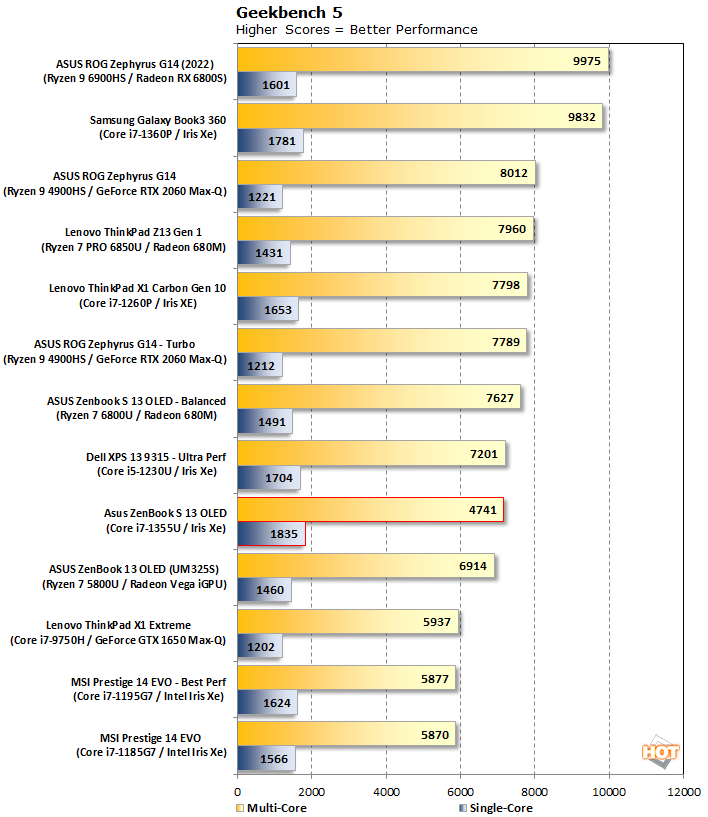
PCMark 10 Productivity And Content Creation Benchmarks
PCMark 10 uses a mix of real-world applications and simulated workloads to establish how well a given system performs productivity tasks, including image and video editing, web browsing, and OpenOffice document editing. While these scores appear to be all over the place, the systems are sorted by their overall PCMark score, which is the third (gray) bar in each cluster.
3DMark Graphics And GPU Tests
3DMark has several different graphics tests which focus on different types of systems. We tested here with Night Raid, which is 3DMark's targeted benchmark for laptops with integrated graphics. This test presents a solid challenge for the system's CPU and GPU engines using DirectX 12's API.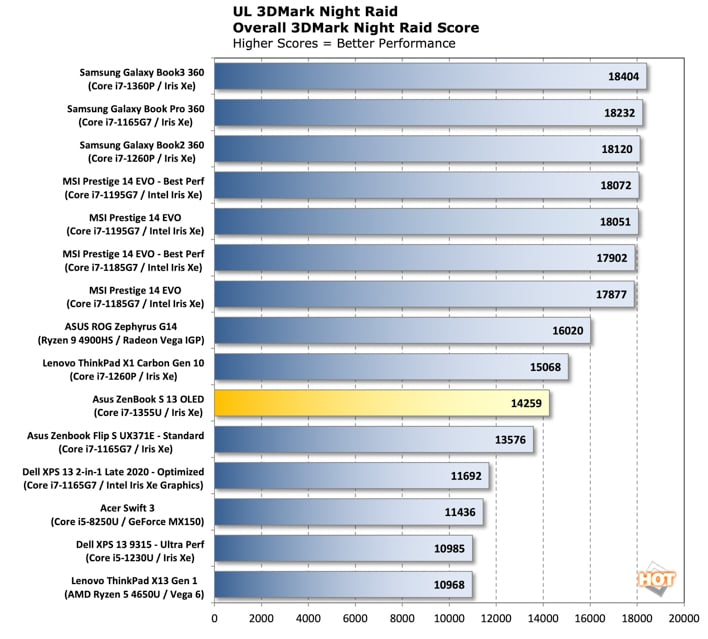
Next up, let's take a look at the Extreme preset for the punishing 3DMark Fire Strike test. This DirectX 11 test has been around for a while, but it's still pretty challenging for mobile GPUs.
